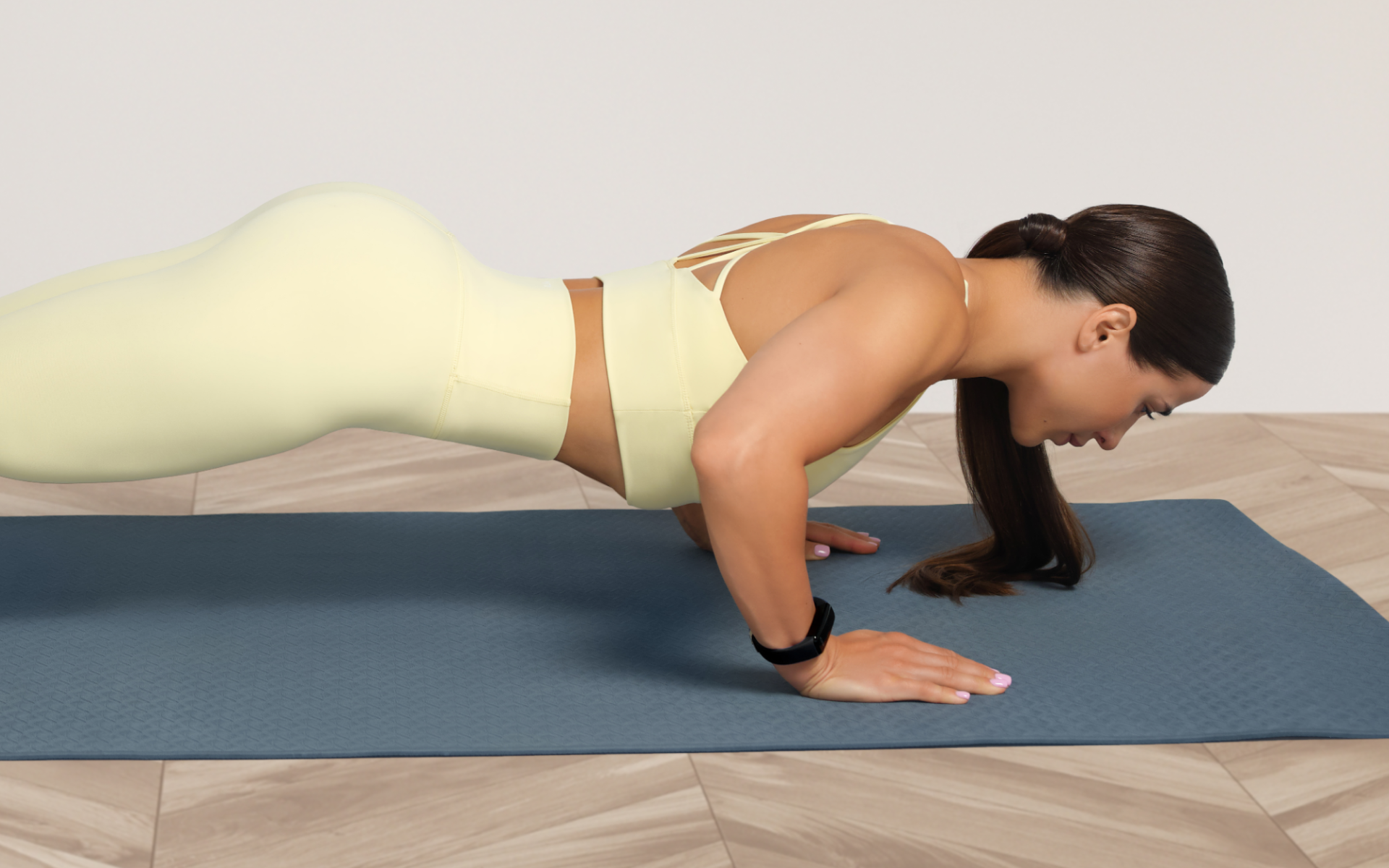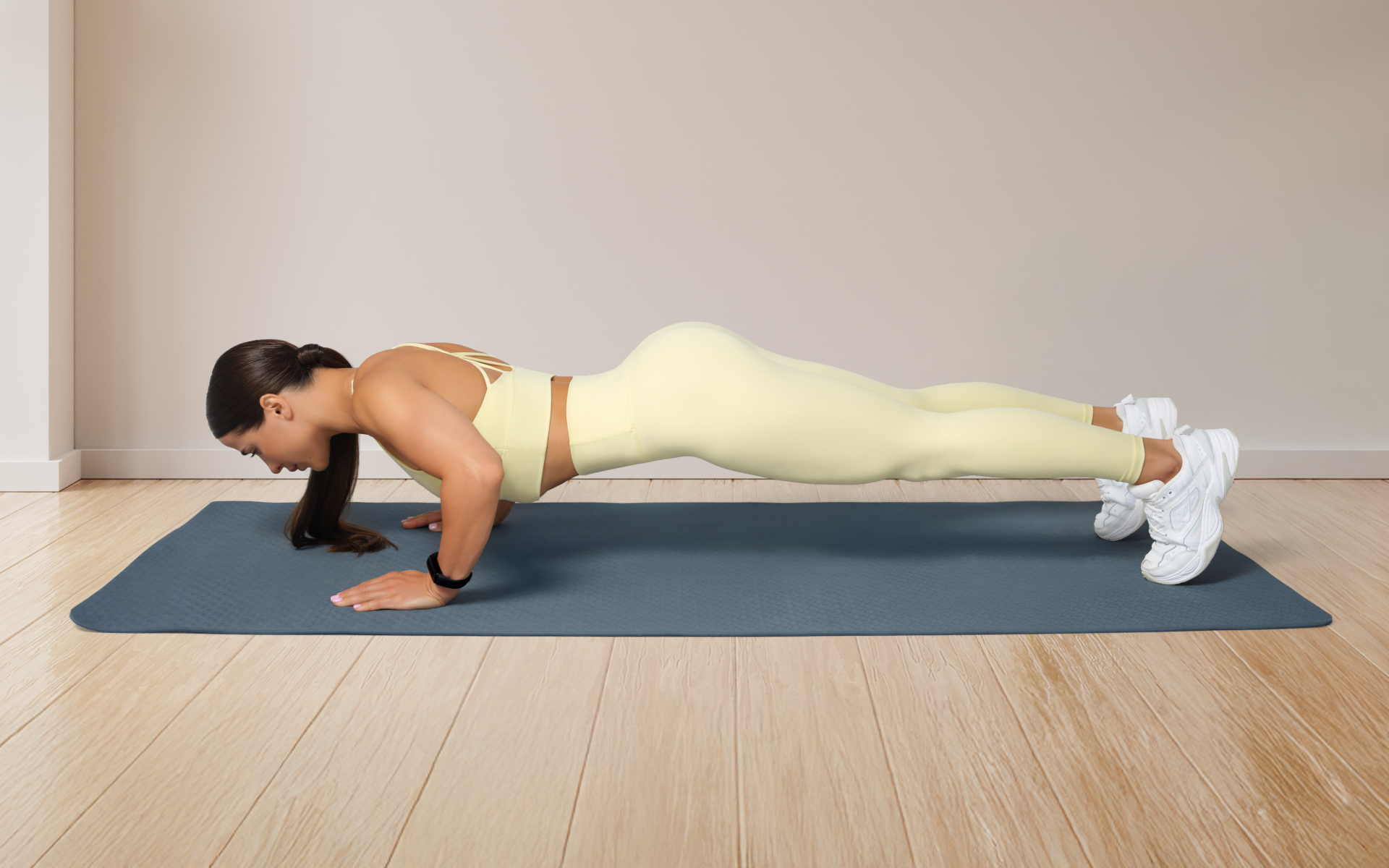Let’s face it, the older you get, the less time you have to spend at the gym. The reason for this is that life has finally caught up and you have responsibilities such as working and taking care of a family. This means hitting the gym 6 days a week is out of the question, but you don’t want to give up on working out altogether.
This is where the 4-day lifting routine comes in. It’s much easier to find four days to work out without having to sacrifice too much as the weekend counts as two days, and you only need to find two more days to work out during the week.
In addition, the 4-day lifting routine comes with another benefit – it gives your muscles and body enough time to rest and recover. Resting and recovering are essential for any workout as they give the body time to repair and strengthen itself so it will be ready to give you its all in the next session without aches or risk of injuries.
You also don’t want to go too far below 4 workouts per week as an effective workout program should meet the following requirements:
- It should have 3 to 5 sessions per week.
- Each session should be between 30 minutes to 90 minutes.
- The routine should include both cardiovascular exercises and resistance training.
To make your 4-day workout routine for muscle gain more effective, it would be better to go with split strength training workouts than full-body strength training workouts. Here’s more on that.
Reasons Split Strength Training Is the Way to Go on a 4-day Lifting Routine
A split routine strength training program involves splitting your workouts so you can target various muscles or body parts on different days (6). On the other hand, full-body or total-body strength training ensures that you work out your entire body with every workout.
Split training has several advantages over a full-body workout:
- May help you break through a plateau
- Gives all muscle groups individual attention, including minor ones that may be neglected in a full-body workout
- Enables you to spend more time under tension for each muscle group, leading to better results
- Gives body parts enough time to recover and repair themselves
If you tend to let yourself off the hook, raise the white flag when things get tougher than you expected, send yourself on an unconscious binge-eating trip – BetterMe app is here to help you leave all of these sabotaging habits in the past!
Break Through a Plateau
There are benefits to both systems. If you’re an amateur, full-body strength training will help you see results and adapt to the training. (6).
The problem with the full-body strength training routine is that it’s easy to hit a plateau (6). A plateau is where there are no changes in your body despite working out as you should. This mostly happens because you’re not able to exhaust any one muscle group enough in a workout session to cause change once you’ve built a foundation of strength.
Give Muscles Individual Attention
Another reason why full-body strength training is not the way to go is that you don’t concentrate on individual muscles and body parts, which is an advantage of the split strength training routine. You’re working your body generally. You may get to work the most muscles at a time, but you won’t have the time or energy to concentrate on all the muscles (6).
For example, if you start with pulling exercises, by the time you get to pushing exercises, you may be tired, and you won’t put as much effort into the exercise as you should. In addition, time may not be on your side and this will result in you not working out effectively as you should.
Do More Exercises for Better Results
In addition to being able to concentrate on individual muscles and body parts, the split workout routine also enables you to do more exercises and more sets, hence better results (6).
If you only have two hours to work out in a day and you’re using the full-body routine, you need to cover the entire body in two hours. However, if you’re only concentrating on your legs, you’ll have enough time to do many leg exercises and many sets/reps.
Give Muscles Enough Time to Recover
Another advantage is that the split exercise routine will help give body parts enough time to recover and repair themselves.
If you only do leg exercises once a week, no matter how hard you go, the legs will have enough time to recover and repair themselves. This is a double advantage as it allows you to push yourself as much as you can in every workout and achieve better results.
What’s a Good 4-Day Workout Routine?
There are various ways you can use to split your workouts. For example, you can choose to work your upper body one day and your lower body the next (6).
You can also split your workouts according to the types of exercises; you can have some days for push exercises and other days for pull exercises (6).
You can also group your routine by muscle groups, which is the routine we are going to use for the 4-day weightlifting routine below. In this 4-day lifting routine, we will group our workout routine as follows:
- Day 1: Chest and triceps
- Day 2: Back and biceps
- Day 3: Rest
- Day 4: Legs (quads, hamstring, calves)
- Day 5: Shoulders, traps, and forearms
- Day 6: Rest
- Day 7: Rest
Read more: Calories Burned Weightlifting and How To Maximize Your Workout
4-Day Weightlifting Routine
Here are all the exercises you should perform each day to work the muscles for that particular day, as well as the sets and reps:
| CHEST AND TRICEPS | ||
|---|---|---|
| EXERCISE | SETS | REPS |
| Triceps pushdown | 3 | 10 |
| Bench press | 3 | 6 - 10 |
| Dumbbell flys | 3 | 10 |
| Cable tricep extension | 3 | 10 |
| Push-ups | 3 | AMRAP (as many reps as possible) |
| Chest dip | 3 | AMRAP (as many reps as possible) |
| Seated French press | 3 | 6-12 |
| BACK AND BICEPS | ||
|---|---|---|
| EXERCISE | SETS | REPS |
| Deadlift | 3 | 5 |
| Seated dumbbell curl | 3 | 8-12 |
| One-arm, elbow-in dumbbell row | 3 | 10 |
| Pull-up | 3 | AMRAP (as many reps as possible) |
| Lat pulldown | 3 | 6-12 |
| Barbell row | 3 | 8-12 |
| LEGS (QUADS, HAMSTRING, CALVES) | ||
|---|---|---|
| EXERCISE | SETS | REPS |
| Leg extension | 3 | 12 |
| Dumbbell step-up | 3 | 10 per leg |
| Plie squat | 3 | 10 |
| Lunges | 3 | 10 per leg |
| Standing calf raise | 3 | 12-15 |
| Squat | 3 | 6-10 |
| SHOULDERS, TRAPS, FOREARMS | ||
|---|---|---|
| EXERCISE | SETS | REPS |
| Seated barbell press | 4 | 3-5 |
| Hammer strength press | 3 | 10 |
| Seated Arnold press | 3 | 6-12 |
| Barbell shrug or dumbbell shrug | 3 | 8-12 |
| Dumbbell lateral raise | 3 | 8-12 |
If you’re unable to do any of the exercises in the 4-day lifting routine, you can replace them with exercises that still work the same muscles, so it won’t create an imbalance in the 4-day lifting routine. For each exercise, make sure you maintain the correct form to prevent injury.
Check out this 1-Month Workout Plan To Get Ripped to supplement the 4-day lifting routine for maximum muscle gains.
Benefits of Strength Training
The 4-day lifting routine is part of the strength training group of exercises, and here are the benefits associated with them (1):
- Help build strength and muscles. This makes everyday activities such as lifting a box of toys or carrying groceries easier.
- Help strengthen your bones. Strong bones are important as they reduce the risk of fracture and other bone-related conditions.
- Help improve joint flexibility. Strength training helps improve your joint flexibility, and this helps prevent the risk of arthritis, pain, and stiffness.
- Help with weight control. This is from the fact that strength training helps build strength and muscles. Muscles have a high resting metabolism as they burn more calories at rest compared to fat mass, which helps with weight loss (7).
- Help with balance and stability. Strength training exercises help increase flexibility, balance, and stability, and this is beneficial as you get old as it prevents the risks associated with falling and injuries (5).
- Help build confidence. You walk confidently when you know you have a six-pack compared to having a fat belly and when you have nice toned legs compared to large legs.
BetterMe app is a foolproof way to go from zero to a weight loss hero in a safe and sustainable way! What are you waiting for? Start transforming your body now!
Is 4 Days of Lifting Enough?
According to The American College of Sports Medicine, for a healthy individual, strength training at least 2 days per week is recommended in order to see an improvement in muscle mass (8). This recommendation is for beginners or individuals who are just getting back into exercise following a break.
However, for more experienced lifters and athletes, 4 days of lifting per week may be necessary to see any progress and maintain their current level of strength and muscle mass.
While the number of days you dedicate to lifting is important, it’s also important to incorporate rest days into your workout routine. They allow your muscles to recover and repair themselves after a strenuous workout (9).
Without proper rest, your muscles may not have enough time to heal and grow, which can lead to potential injury and plateaued progress (10).
When it comes to strength training, it’s important to listen to your body. If you’re feeling fatigued or experiencing muscle soreness, this may be a sign that your body needs a break. It’s okay to adjust your workout schedule to suit your body’s needs. Going all out with 4 days of lifting when your body is telling you to take a rest day can do more harm than good.
In addition, it’s important to vary your workouts and incorporate different types of exercises to prevent overuse injuries and keep your muscles challenged. This could involve utilizing exercise variations, changing up the number of sets or reps, or trying out different equipment.
Discover the relationship between strength training and weight in our blog – Do You Weigh More After Working Out?
Is a 4-Day Split Better Than 6?
A 4-day split allows for more recovery time between workouts, which can be beneficial for those who are new to weightlifting or prone to injury. It also allows for more variety in exercises, which makes it easier to avoid plateaus and keep the body challenged.
On the other hand, a 6-day split may be better suited for experienced lifters who have built a strong foundation and are looking to maximize muscle gains. However, this approach requires a high level of discipline and dedication as working out 6 days in a row can be both physically and mentally demanding.
Ultimately, the best workout split is dependent on your fitness goals, level of experience, and personal preferences. It’s best to find a schedule that works for your body and allows for proper rest and recovery.
Read more: Calories Burned Lifting Weights for 30 Minutes Every Day
FAQs
Can I build muscle after 40?
You can build muscle after 40, or at any age, but it may require some modifications to your workout routine and diet. As we age, our bodies naturally lose muscle mass and strength (2). To combat this, incorporating strength training into your exercise regimen is essential.
The strength training sessions may need to be shorter and more focused, with a greater emphasis on proper form.
In addition, increasing your protein intake can help with muscle building and recovery (3). A certified trainer or nutritionist can help you to create an effective plan for building muscle after 40.
This 7-Day Protein Shake Diet offers a convenient and beginner-friendly way to boost your protein intake.
Is it okay to deadlift 4 times a week?
Deadlifting 4 times a week may be too much for you, particularly if you’re new to the exercise. Deadlifts are a compound movement that engages multiple muscle groups, and they can be quite taxing on the body.
If you want to incorporate deadlifts into your workout routine more frequently, it’s important to vary the intensity and volume of your lifts.
For example, rather than doing heavy deadlifts 4 times a week, try incorporating different variations such as Romanian deadlifts or single-leg deadlifts. It’s also important to listen to your body and take rest days when needed.
If you’re an experienced lifter and have built up your strength and endurance, 4 times a week may be doable. Again, it’s important to pay attention to how your body responds and make adjustments as required. You must space out your deadlift sessions and have adequate rest days to prevent injury and maximize muscle growth.
Will I lose strength after 4 days?
Taking a break from lifting for 4 days may not necessarily cause you to lose strength. Rest and recovery are essential components of building muscle and getting stronger. Allowing your body time to recover can actually improve your overall performance and prevent overtraining.
However, if you’re inactive during those 4 days, you may experience slight decreases in strength. To minimize this, try incorporating light physical activity on your rest days, such as going for a walk or doing some light stretching.
It’s also important to keep track of your nutrition on rest days and make sure you’re still getting adequate protein and proper nutrients to support muscle growth and maintenance (4).
As long as you remain consistent with your workouts and maintain a healthy diet, 4 days of rest should not significantly impact your strength.
Is 2 hours in the gym too much?
Not necessarily. It depends on what you spend those 2 hours doing. If you’re spending the entire 2 hours lifting heavy weights and pushing your body to its limit, then it may be too much for most people.
The recommended amount of time for strength training is 45 minutes to an hour. As mentioned earlier, rest and recovery are just as important as the workout itself. Going over this recommended time frame can lead to overtraining and potential injuries.
If you find yourself consistently spending 2 hours in the gym, it may be time to reassess your workout routine and make sure you’re giving your body enough rest. Quality over quantity is the key when it comes to strength training.
That being said, if you’re spending 2 hours in the gym and incorporating a variety of exercises, including cardio and stretching, then it may not be too much. You may also take longer if the gym is busy and you find yourself having to wait for equipment, or if you’re resting longer between sets if you’re lifting heavy weights.
The Bottom Line
The 4-day lifting routine provides a split exercise program that allows you to work different muscles on different days to optimize the routine. The main aim of this 4-day lifting routine is to build muscles and strength.
While training, you should aim to make progress on every set to get the maximum results from the workout routine. You can make small changes to the 4-day routine until it fits into what you want.
If you feel as if 6 reps are too many, start with 3 and increase the number of reps as you get used to the exercise. It’s also a good idea to alternate exercises after a few weeks as diversity is the flavor of life, and it helps target muscles differently.
DISCLAIMER:
This article is intended for general informational purposes only and does not serve to address individual circumstances. It is not a substitute for professional advice or help and should not be relied on for making any kind of decision-making. Any action taken as a direct or indirect result of the information in this article is entirely at your own risk and is your sole responsibility.
BetterMe, its content staff, and its medical advisors accept no responsibility for inaccuracies, errors, misstatements, inconsistencies, or omissions and specifically disclaim any liability, loss or risk, personal, professional or otherwise, which may be incurred as a consequence, directly or indirectly, of the use and/or application of any content.
You should always seek the advice of your physician or other qualified health provider with any questions you may have regarding a medical condition or your specific situation. Never disregard professional medical advice or delay seeking it because of BetterMe content. If you suspect or think you may have a medical emergency, call your doctor.
SOURCES:
- 5 Benefits of Strength Training (2019, cancer.org)
- Age-Related Loss of Muscle Mass and Strength (2012, ncbi.nlm.nih.gov)
- Dietary Protein and Muscle Mass: Translating Science to Application and Health Benefit (2019, ncbi.nlm.nih.gov)
- Eat to Gain Muscle-The Role Food Plays in Strength Training (2017, issaonline.com)
- Effectiveness of exercise interventions on fall prevention in ambulatory community-dwelling older adults: a systematic review with narrative synthesis (2023, frontiersin.org)
- How to Set Up a Split Strength Training Routine (2020, verywellfit.com)
- Metabolism: What It Is, How It Works and Disorders (2021, my.clevelandclinic.org)
- Physical Activity Guidelines Resources (n.d., acsm.org)
- Resistance training – health benefits (2022, betterhealth.vic.gov.au)
- Why Rest Days Are Important for Muscle Building (blog.nasm.org)













